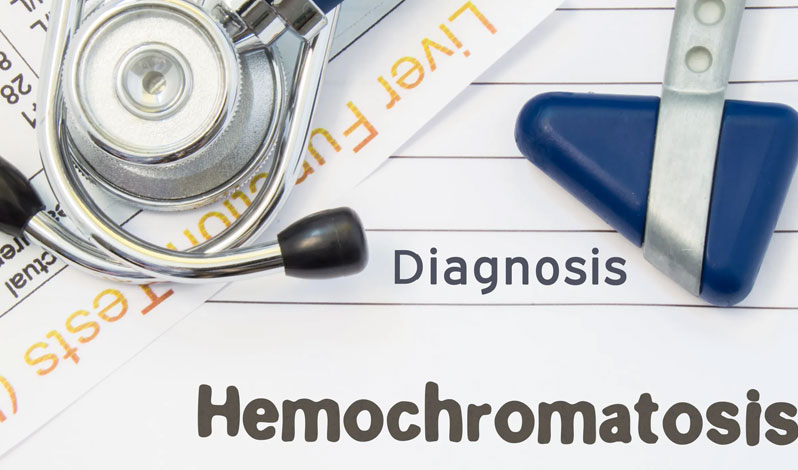
07, Jul 2020
Hemochromatosis is an adult-onset genetic condition with iron overload disease where there is a buildup of excess iron in our body.
This buildup can affect the heart, liver, endocrine glands, joints and pancreas.
Persistent iron overload leads to long-lasting damage, including cirrhosis, arthritis, diabetes, irregular heart rhythms or weakening of the heart muscle and erectile dysfunction.
Hereditary hemochromatosis, one of the most common genetic disorders in the United States, is caused mainly by specific mutations in the HFE gene.
A gene mutation affecting roughly 1 million people usually causes hemochromatosis.
Hemochromatosis may be primary or secondary.
Primary hemochromatosis, also known as hereditary hemochromatosis, is an inherited disorder.
Secondary hemochromatosis is caused by alcoholism, anemia and other disorders.
Early detection and treatment of hemochromatosis can reduce damage and lighten the symptoms so that a person can live a normal, healthy life.
July being Hemochromatosis Screening Awareness Month, now is the time to learn about getting screened.
People who have symptoms or have a family history of the disease should be screened with two simple blood tests — serum ferritin test and a transferrin saturation test.
This bloodwork measure the amount of iron in our body.
High levels of iron prompt testing for the gene mutation that causes hemochromatosis.
In severe cases, liver biopsy is also ordered.
A rare disease, hemochromatosis is often not diagnosed or treated by physicians.
The U.S. Preventive Services Task Force does not recommend routine genetic screening for hereditary hemochromatosis in asymptomatic patients.
Still, individuals with a family history of hereditary hemochromatosis should be counseled regarding genetic testing.
More: Mitra: Educating family important for Alzheimer's patients
More: Mitra: Getting shorter as you age? It may be osteoporosis
More: These methods can help detect cancer early
Typical symptoms of hemochromatosis are abdominal pain, fatigue, joint pain, weight loss, hair loss, early menopause, elevated liver enzymes, impotence, arthritis, changes in skin color (bronze or gray), cirrhosis, diabetes, heart failure and high blood sugar.
Treatment for hemochromatosis is safe and simple.
It includes a drawing of blood, a process called phlebotomy.
The goal of phlebotomy is to reduce the amount of iron in a person's body.
Once iron levels return to normal, a person can schedule maintenance phlebotomy treatments every few months.
Many blood donation centers offer free blood drawings for people with hemochromatosis.
Serum ferritin levels should be checked at least once a year. There are also dietary considerations to be followed to avoid iron overload by eating moderate amounts of iron-rich food products, such as red meat, avoiding iron supplements, avoiding supplements that contain vitamin C, which increases iron absorption.
Please speak to your family members about their health history, and share the information with your doctor to help determine which tests and screenings are recommended to know your health risk.
Dr. Sue Mitra can be reached at 321-622-6222 or info@suemitra.com. Call now to know your health risk.
Dr. Sue Mitra and her staff strive to offer their patients the best care, advice and services available in the medical field with the goal to keep patient healthy & happy.

Dr. Sue Mitra is board certified in international medicine. She is seen here with a Cologuard, which is a noninvasive colon cancer screening test. (Photo by: Tim Shortt/Florida Today)